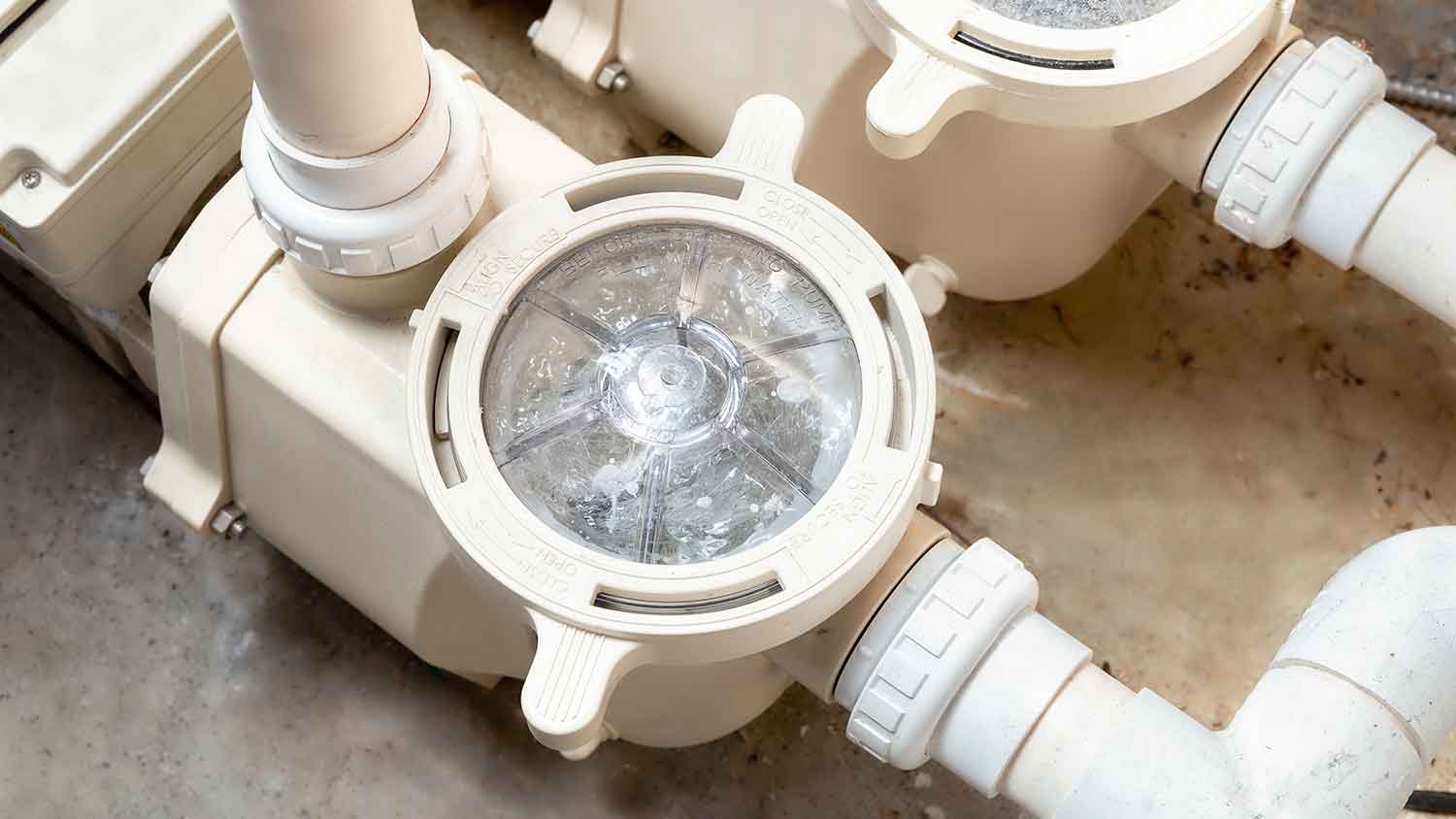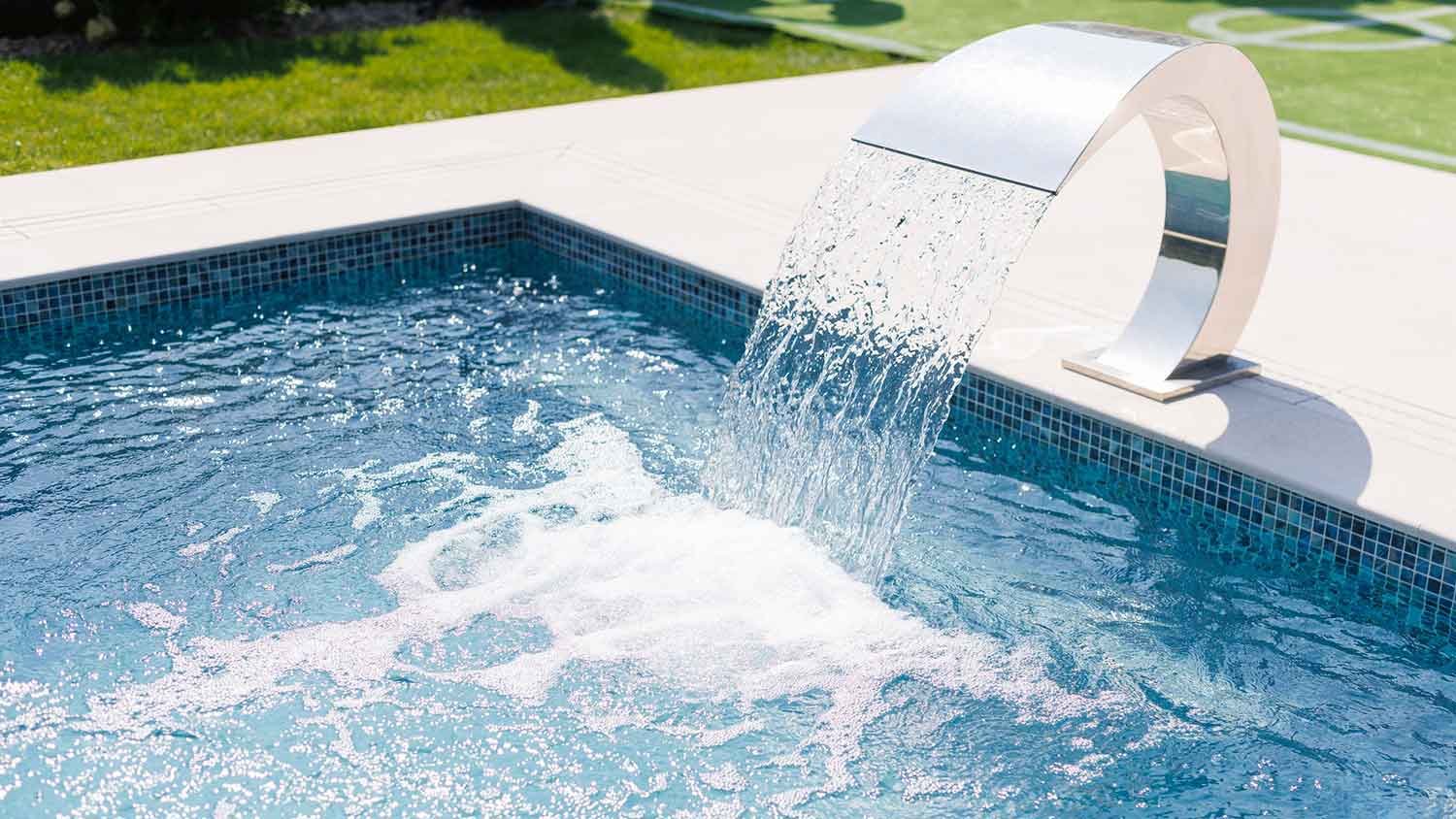What’s the Difference Between Two-Speed vs. Variable-Speed Pool Pumps?
Control the need for speed and get cleaner water with an efficient pool pump


The adjustable speed control with variable-speed pumps works better for pool heaters and chlorinators.
Variable-speed pool pumps fall in the $800 to $2,500 range.
Two-speed pool pumps don’t work well or at all for extra features like waterfalls.
Two-speed pumps cost between $300 and $1,600.
Pool pumps keep water circulating through filters, chlorinators, salt systems, and heaters. We compare two-speed versus variable-speed pool pumps to identify the similarities and differences that could make your pool experience more manageable. Variable pumps offer more control and efficiency, though two-speed models have a simpler design and are more inexpensive up front. Keep reading to decide which is right for your pool.
Two-Speed vs. Variable-Speed Pool Pumps: Key Differences
The key differences between these two pool pump types are the speed options and efficiency. Two-speed pumps have an induction motor with a low or half speed for daily use and a high or full speed for cleaning the pool or when there’s more debris and contaminants in the water. Variable-speed pumps have a permanent magnet motor (PMM) with the ability to “dial in” the flow rate as needed for extra features or heavy pool use.
If you’re unsure which option will work best, a local pool repair pro can assess your pool and recommend the best pool pump for your needs.
What Is a Two-Speed Pool Pump?

Two-speed pool pumps have an induction motor that can run at a low or high speed. The low speed provides a turnover rate (the number of times in a 24-hour period that the pool’s water volume is circulated) for everyday use. The high-speed setting has a flow rate that can be used when cleaning the pool and possibly for using a heater or chlorinator. These pool pumps are more affordable up front but aren’t as energy efficient, especially if you have to run them at high speed at all times to keep the water clean.
| Pros | Cons |
|---|---|
| Less expensive | Requires additional timers and automation for peak efficiency |
| Offers two speeds for different purposes | May not work with additional pool features |
| Timers can be added | Less efficient |
Best for:
Low to moderate use for seasonal pools
Homeowners looking for a wallet-friendly option
Pools without a heater or chlorinator
Pros of Two-Speed Pool Pumps
Two-speed pumps cost between $300 and $1,600, which is less than most variable-speed pumps. The low speed has enough turnover for low to moderate use, and the high speed can work for high-use pools and cleaning. Most two-speed models don’t have built-in automation features, but timers can be added to the system.
Cons of Two-Speed Pool Pumps
A two-speed pump’s induction motor will always be less efficient than a variable pool pump’s PMM. An induction motor’s design has more friction, increasing wear and tear and reducing efficiency. Timers can improve efficiency, but two-speed pumps still use more energy than a variable model.
Additionally, a two-speed pool pump isn’t a good option for chlorinators, pool heaters, and many other common pool parts and features. In some cases, they may work if the two-speed pool pump runs on high all the time, but that could defeat the purpose of buying the budget-friendly option.
What Is a Variable-Speed Pool Pump?

Variable-speed pool pumps have a PMM, which decreases friction and improves energy efficiency. Some models include built-in programming to increase or decrease the flow rate at specific times or when certain features, like a waterfall or heater, are running.
| Pros | Cons |
|---|---|
| More control over speed | More expensive |
| Built-in automation settings | |
| Work with pool heaters, chlorinators, and pool vacuums | |
| High efficiency |
Best for:
High-use pools
Pools in high foliage areas where frequent cleaning is needed
Pools with heaters, chlorinators, and waterfalls
Pros of Variable-Speed Pool Pumps
Variable-speed pumps offer the ultimate in flow rate control. You can reduce the flow rate during the offseason when the pool isn’t in use or increase it during cleaning or high-use seasons.
Some variable-speed pumps have built-in automation features, and you can pair them with timers if they’re not built-in. Variable-speed models work well with pool heaters, chlorinators, and pool vacuums for easier pool maintenance. Finally, it’s hard to beat this modern motor’s efficiency, which helps keep pool maintenance costs in check.
Cons of Variable-Speed Pool Pumps
On the downside, variable-speed pool pumps cost between $800 and $2,500, which can be significantly more than a two-speed model. Those with a larger pool and more extras, like water features, will need a larger model that’s at the higher end of the price range. Those with small pools and fewer pool extras, like heaters or chlorinators, can find a model at the lower end of the range, which is closer to the price of a two-speed pump.
Two-Speed vs. Variable-Speed Pool Pumps
We put these two pool pump types side-by-side to see how they match up in specific categories.
Efficiency: Variable Speed
A variable-speed model’s PMM reduces heat in the rotor, which reduces lost energy. That efficiency shows in the reduced power it takes to run the pump. No matter how well-maintained a two-speed pool pump is, a variable-speed pool pump will outperform it in efficiency.
Performance: Variable Speed
Variable-speed pool pumps let you fine-tune the water flow to maximize the water quality with other features like a heater or chlorinators. These pumps are also quieter with fewer vibrations, making them more pleasant to have around the pool.
Price: Tie
If cost savings are a priority, purchasing a two-speed pump could be the better option. However, if you consider the price to run the pump over its lifetime, a variable pump makes more sense.
Durability and Maintenance: Variable Speed
Variable-speed pool pumps have fewer components, reducing wear and tear and maintenance-associated time and costs. Their durability and longer lifespan can further increase energy and money savings and mean your pool pump will last longer.





- Swimming Pool Installation
- Pool Liner Replace & Install Companies
- Above Ground Pool Contractors
- Pool Remodeling Companies
- Inground Pool Companies
- Pool Removal Companies
- Inground Pool Repair Companies
- Sauna Companies
- Hot Tub Companies
- Sauna Repair
- Fiberglass Pools
- Pool Designers
- Pool Pump Repair
- Pool Closing Services
- Solar Pool Heater Installers










